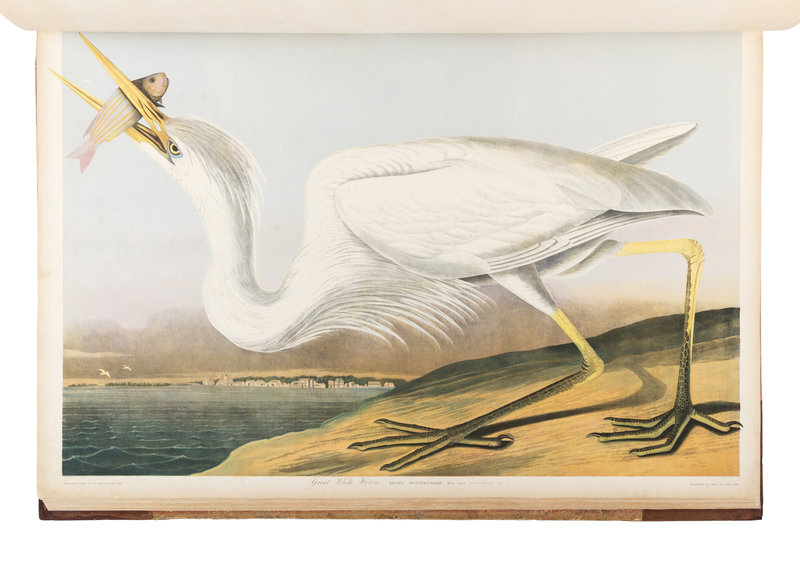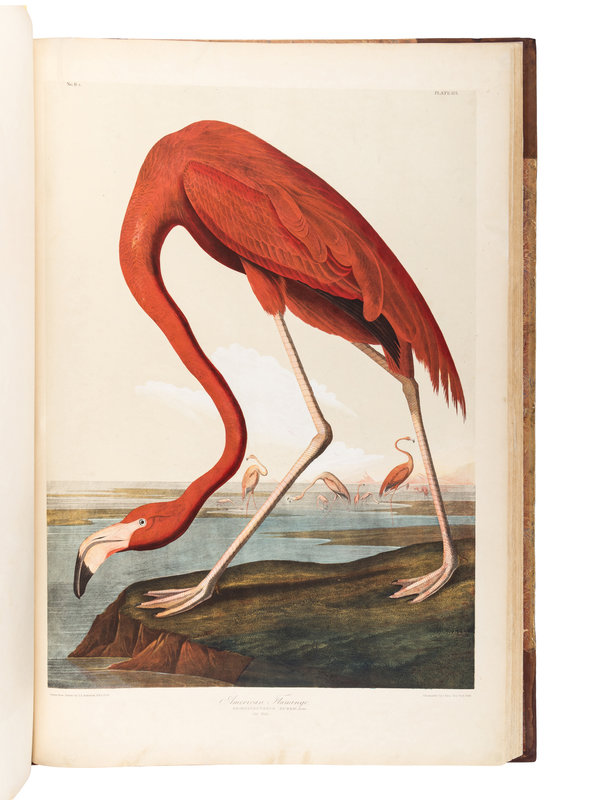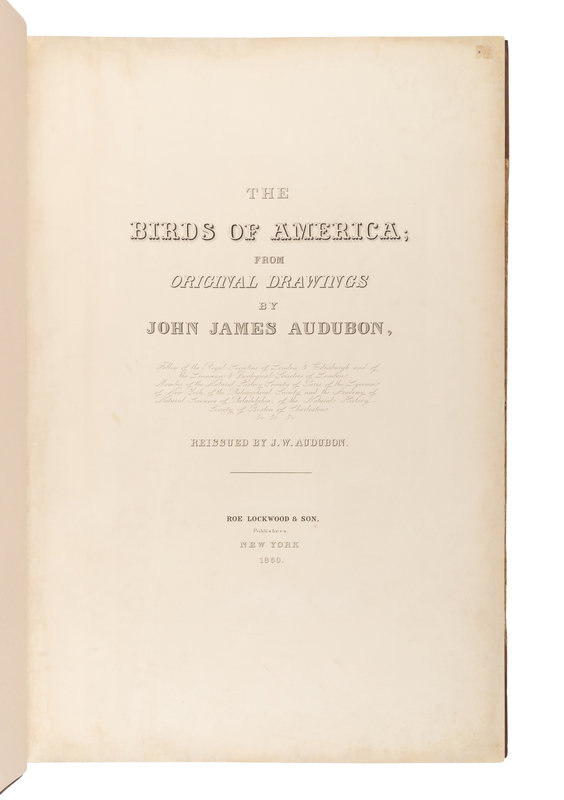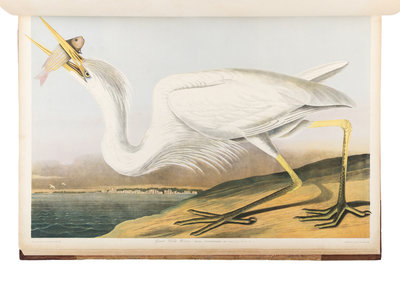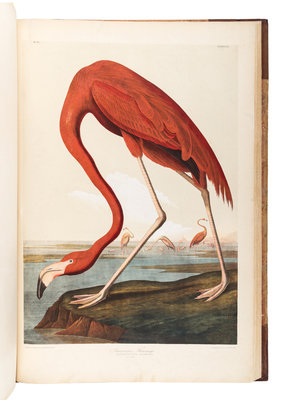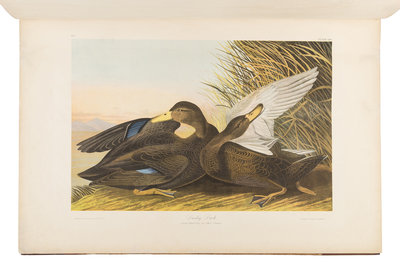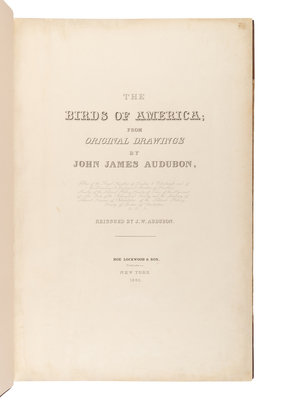Lot 3
Double elephant broadsheets (1000 x 675 mm). Lithographed title, 150 CHROMOLITHOGRAPHIC PLATES ON 105 SHEETS, some finished by hand, by Julius Bien after J. J. Audubon. (Title with vertical crease crossing text, approximately 8 plates with soft vertical crease, a few plates slightly browned, some minor mostly marginal soiling, plate I with a few minor surface abrasions and tiny portions provided in facsimile, neat repairs verso to a few corners and sheet edges occasionally just touching imprint or image, some occasional minor offsetting and spotting.) Contemporary half calf, marbled boards, spine in 7 compartments with 6 wide raised bands, gilt-lettered in 2, the rest gilt-ruled (rebacked preserving original spine, a few other repairs, some light rubbing and wear). Provenance: Small label on title-page ("E126").
THE SECOND FOLIO EDITION OF AUDUBON'S MASTERPIECE
John Woodhouse Audubon set out to reproduce his father's Birds of America in 1858 or 1859 at half the original cost by producing full-size chromolithographic reproductions of the original hand-colored aquatint plates. He intended to issue his work in 45 numbers, 44 of plates, and one of text, at a cost of $500 per subscriber. He enlisted the services of Julius Bien, a German who came to the United States following the Revolution of 1848, and whose engravings and lithographs were of the highest quality.
Only the first 15 parts would be published, however; the printing was interrupted by the outbreak of the Civil War, and the project collapsed in 1861. The failure of the venture, followed shortly by the deaths of both her sons, obliged Audubon's widow Lucy to sell her husband's original drawings and copper plates. The New York Historical Society purchased the drawings in 1863, but after no buyer was found for the copper plates, most were melted down. The chromolithographic stones for the Bien edition were also lost when the warehouse where they were stored in New Orleans was shelled. "Although only one-third completed when the project collapsed in 1861, the Bien Audubon is the largest and most ambitious color plate book undertaken in 19th-century America, rivaled only by the folio Quadrupeds" (Reese 40).
A full-size reprint of the folio Birds of America would not be completed until the Johnson Reprint Corporation's facsimile edition was published in 1971-1973. Nevertheless, the 150 plates produced by Bien and J. W. Audubon include many of John James Audubon's most celebrated images, including the wild turkey, the flamingo, the barn owl, and the white-headed eagle. No prospectus has been found, and the exact number of copies published is unknown: Fries located 49, but Clark and Bannon estimate the number of sets produced between 50 and 100. The present copy has a variant imprint dated 1860 but with no mention of Julius Bien; the plates are dated from 1858-1860 as usual, with most numbered with the part and series number at the upper left and the final number, corresponding with the author's 1839 synopsis, at upper right. Ayer 24-25; Fries, Appendix B, pp.355-359; Nissen IVB 50; Reese Stamped with a National Character 40.
